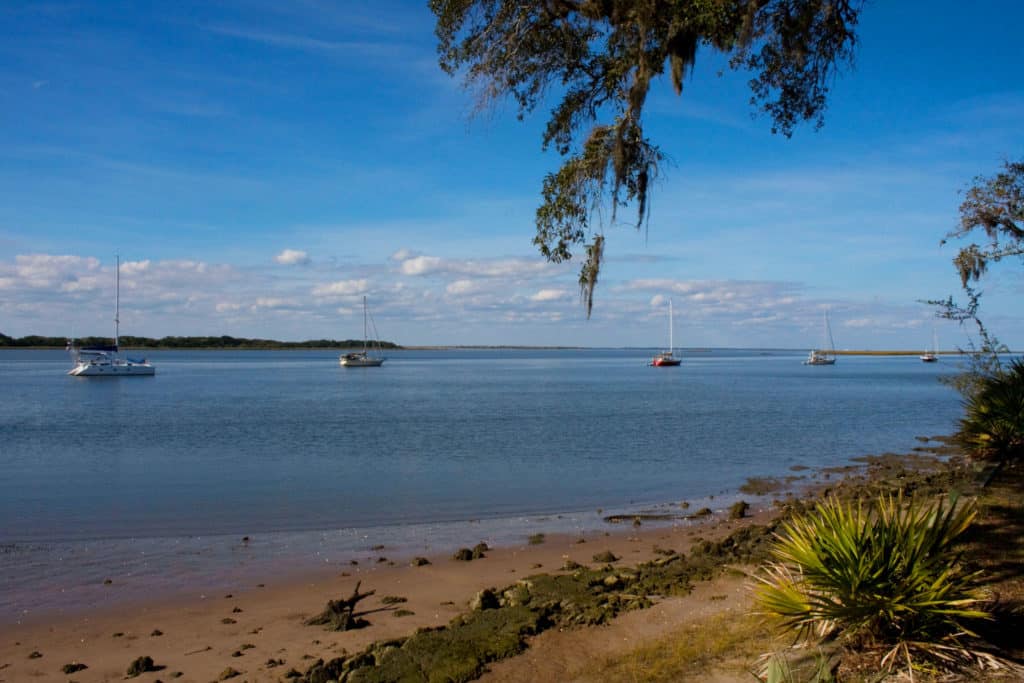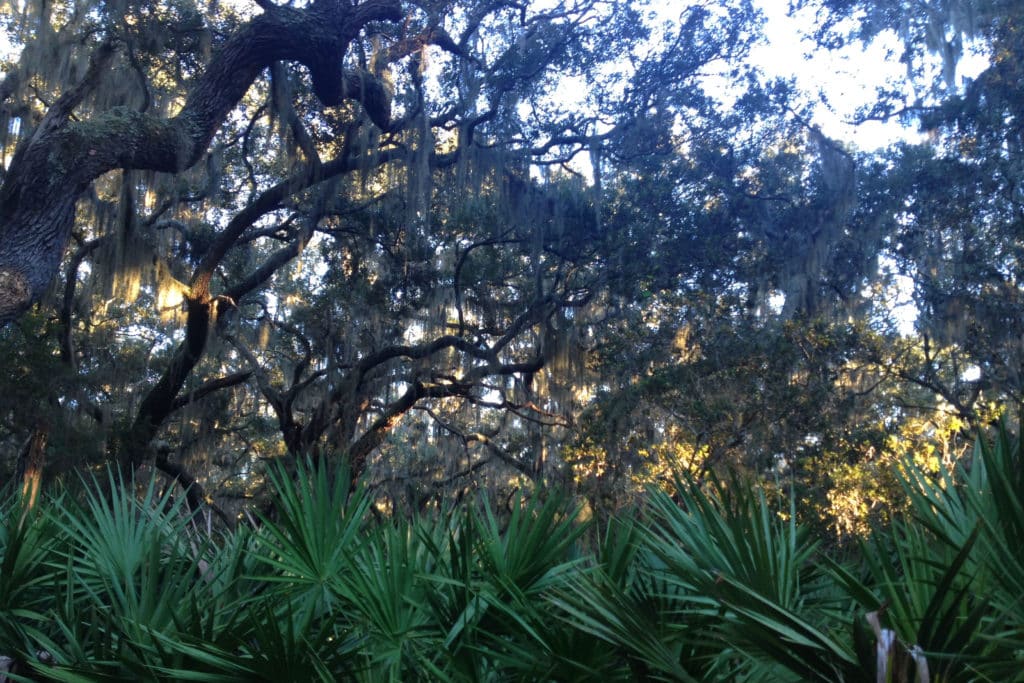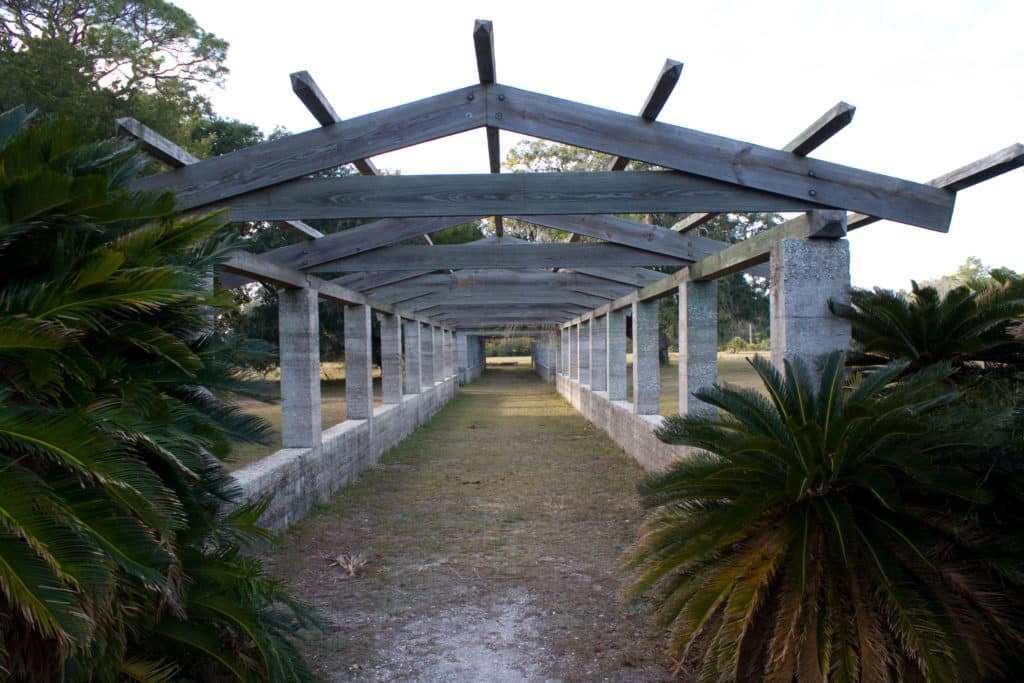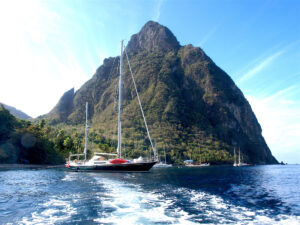
Don’t go through Georgia,” fellow cruisers told my husband, Chip, and me on our inaugural trip down the Intracoastal Waterway. Ninefoot tides, shifting currents, shallow waters and other horrors awaited us there, and, because we were rookies, we listened. For more than a week, we hunkered down in Beaufort, South Carolina, waiting for a good weather window to go offshore and bypass Georgia entirely. But with only 23 days of cruising under our keel, we were just beginning to learn that Mother Nature was in charge, and she had other things to show us.
Tired of killing time, we scratched that offshore plan and nervously tiptoed into the northern reaches of Georgia. For four days, we plied through capricious waters, finding that the grousing cruisers were right about everything — the currents, the shallows and the 9-foot tidal swings. What they had failed to tell us, however, was that Georgia would be, quite simply, beautiful. Those robust tides required constant attention, but in exchange, they laid bare a stunning and majestic marshland devoid of human development. We were treated to mile upon mile of blazing gold marsh grass set off against steely gray November skies, a thriving estuary reserved for shorebirds, fish, insects, reptiles — and those lucky enough to have a boat.
Then, at Georgia’s southernmost point, we discovered what might be the state’s best treasure: Cumberland Island. Motoring into the anchorage off Cumberland Island, I looked toward the shore and wondered what all the fuss was about. Friends of mine had waxed on about the place, but my only knowledge of the island came from John F. Kennedy Jr. Why would someone who could have married anywhere in the world choose Cumberland Island for his fairy-tale wedding? Then I stepped onto Cumberland and into my own Tolkienesque fairy tale.

Gnarly, writhing live oak trees bend and strain toward the sky, so twisted, regal and filled with life that you can almost hear them whisper Middle Earth secrets behind your back. Stretching their arthritic arms far overhead, they grasp hands to form a towering cathedral ceiling over sandy footpaths. From below, palmettos spread their brilliant green fans to reach up toward wispy Spanish moss of the palest green-gray stretching down from above.
It’s a place so enchanted you can feel the ghosts of past residents wandering about — a place so mystical that when a wild horse wanders up, you expect to see a single horn sprouting out of its forehead. And then, a rustling erupts among the palmettos, and out walks a tiny gray armadillo with a pointy nose and full armor, gazing at you as if you’re the one so oddly out of place. The island, home to salt marshes, maritime forest and white sand beaches, has a history woven from familiar North American threads. For thousands of years, its only inhabitants, as far as we know, were the Tacatacuru, part of the Timucua tribe, who summered there, gathering shellfish along its generous Atlantic shore that stretches more than 15 miles. They called the island Wissoo, their word for the abundant indigenous sassafras that they harvested for medicinal use.
Then, in the 16th century, the Europeans showed up — first the Spanish, followed by the pirates, and then the British, who renamed the island after the Duke of Cumberland, erasing the last trace of those first occupants.
After the Revolutionary War, the island became part of the new state of Georgia, and plantations began to sprout. By the mid-1800s, there were 10 cotton plantations on Cumberland. After the post-Civil War collapse of the plantation system, wealthy U.S. families, including the Carnegies, purchased the land and ushered in the Gilded Age. They turned the plantations into lavish private estates where they vacationed and entertained the famous and affluent of the time.
One of those estates, the Dungeness mansion, still stands, sort of, now in haunting yet lovely ruins. Its checkered and ill-fated history includes wartime occupation, famous names, tragic fires and rumors of arson. The National Park Service now owns the Dungeness ruins as well as most of Cumberland Island. Cumberland is a barrier island and a designated national seashore, inhabited mostly by wild horses, armadillos, shorebirds and nesting sea turtles. It’s accessible only by ferry and private boat.
The ferry dock near the anchorage includes a convenient floating dinghy dock. The Sea Camp Ranger Station and museum are open from 10 to 4:30, and staff is available with maps and information on guided tours. The island has 87 structures listed on the National Register of Historic Places, including Dungeness and the First African Baptist Church, where JFK Jr. was married.

As the island’s maritime history suggests, the approach to Cumberland welcomes vessels from every direction. From the north, you follow the ICW by Jekyll Island and across St. Andrew Sound, a crossing not to be taken lightly, as it passes through the eastern edge of the shoalfilled sound, fully exposed to the Atlantic. Once past the sound, Cumberland offers full protection on a long and lolling ride to the main anchorage, tucked up under the southern tip of the island. You’ll enjoy good holding in 9 to 15 feet of moss-green Georgia water.
Although Cumberland Island feels as remote as Middle Earth, civilization lurks just across the water. Cumberland forms the northern shore of the wide St. Marys River inlet. Upriver, past a few sharp turns, St. Marys, Georgia, offers copious anchorage space, sailor-friendly services and generous open arms at Thanksgiving, hosting the entire cruising community for the price of a side dish.
To the south, past the inlet, you’ll find the full-service charm of Fernandina Beach, Florida, a bustling little burg well camouflaged by its industrial waterfront. Depending on the weather and your needs, you can choose a marina slip, a mooring ball or a convenient anchorage.
That first year, when we left Beaufort, I had dreaded the journey south through Georgia as a necessary evil that, at the end, would deliver me to a Bahamian dreamland painted in a palette of turquoise and white. It’s hard now to believe that the rush to my imagined paradise almost made me miss one I never even considered.
Tammy Kennon cruised with her husband, Chip, for three years aboard their Island Packet 380.








